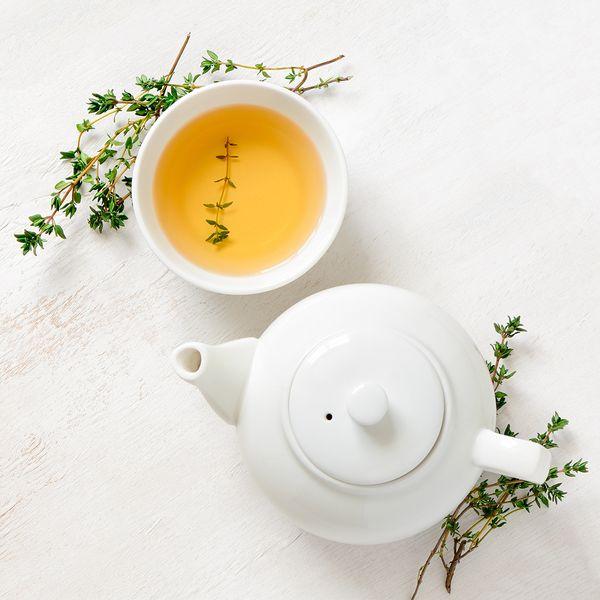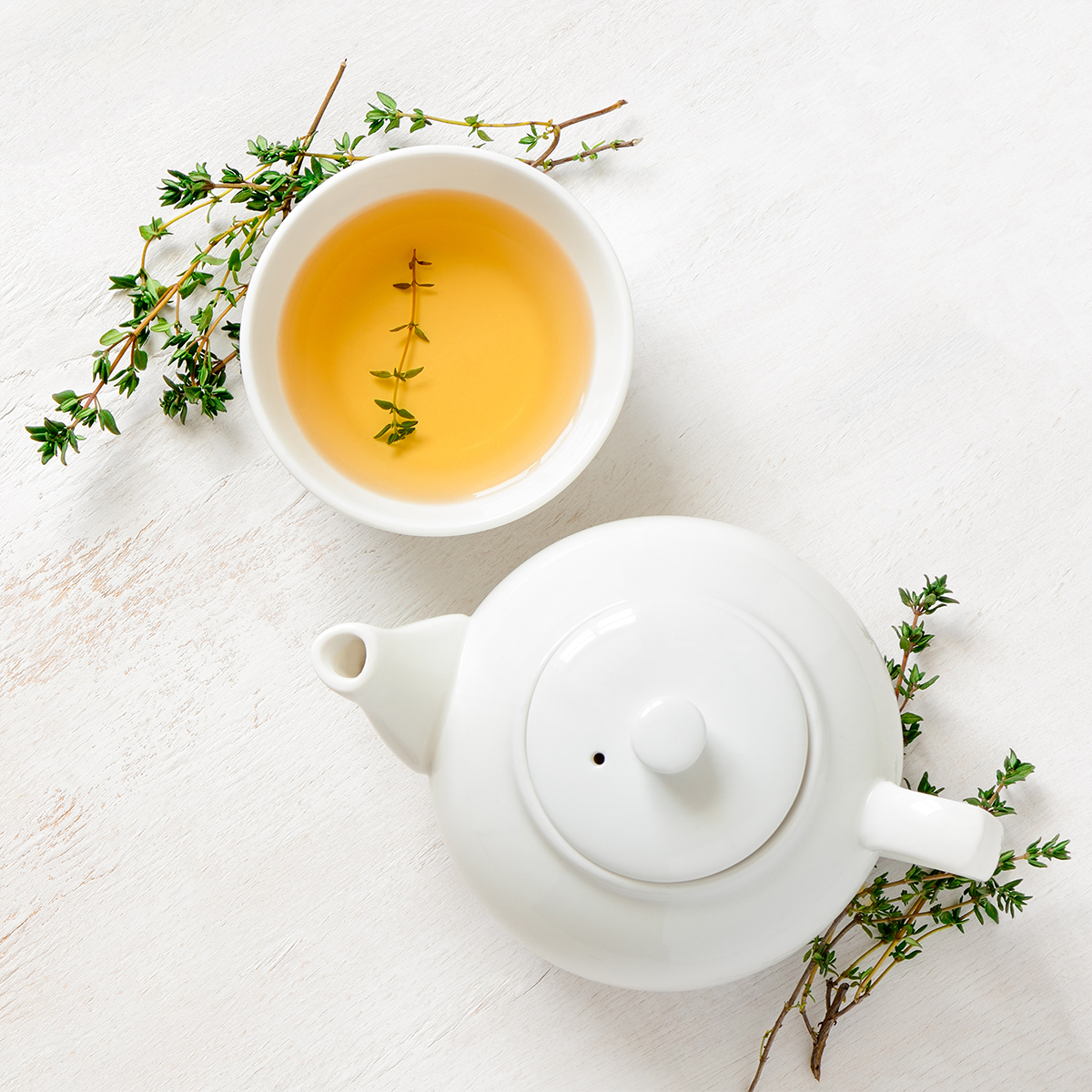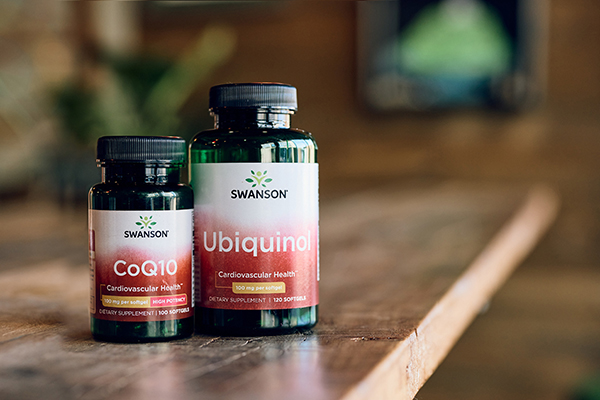So you’re ready to be a tea connoisseur, but you don’t know where to start? Well, you’re in luck! We’re big fans of the art of drinking tea and we’ve made it easy for you by putting together everything you need to know about tea, including types of tea, origins, caffeine content and how to prepare the perfect cup. By the end of this post, you’ll be ready to take on the world, one cup of tea at a time.
Tea History & Facts
 Black Tea
Black Tea
Black tea has been enjoyed in China since at least the 16th century. This classic tea is created by rolling tea leaves and allowing them to oxidize. The resulting flavor is bold, hearty and slightly bitter. Black tea has the most caffeine of all the tea types with 40-60 mg per cup, about half as much as a cup of coffee.history of black tea is uncertain, but it’s been enjoyed in China since at least the 16th century. Black tea is created by rolling the leaves and allowing them to oxidize. The resulting flavor is bold, hearty and slightly bitter. Black tea has the most caffeine of all the tea types with 40-60 mg, about half as much as a cup of coffee.
White Tea
White tea dates back to the Tang Dynasty in China (618-907 A.D.). Initially a delicacy for royalty, white tea eventually became more common and is today enjoyed by many who appreciate its mild, subtly sweet and delicate flavor. White tea contains a small amount of caffeine (10-15 mg) and can be enjoyed throughout the day.
Green Tea
Green tea wasn’t enjoyed by the general public in China until the 1400s, but it had been around much longer for the more elite. The history of green tea dates all the way back to 2737 BC! Green tea is still produced mostly in China and Japan today, but it is enjoyed around the world for its smooth and fresh taste as well as its many health benefits. Green tea is known for its potent antioxidant benefits, primarily attributed to epigallocatechin gallate (EGCG), a polyphenol found within green tea. Green tea also helps boost energy levels, and some people drink it to help maintain a healthy weight.
Herbal Tea
Tea and herbs have both been a part of the Chinese culture for thousands of years, so it was only natural that the two forces eventually came together in herbal tea. Herbal teas are made today with dried fruits, herbs and flowers. They are preferred by many since most herbal teas are caffeine free. Rooibos tea and chamomile tea are just two of the many popular types of herbal tea.
Oolong Tea
While only 2 percent of all tea consumption worldwide is from oolong tea, this wonderful tea deserves more attention. It has been linked to benefits such as increasing metabolism. This delicate, sweet and smooth tea has been around since the 16th century. If you try it, you may notice that the leaves have a unique appearance. Oolong tea is made using a fermentation and oxidation process that gives the leaves a yellow surface with a reddish edge.
Pu’erh (Pu’er) Tea
Pu’erh (pu’er) tea has been cultivated in China since the Han Dynasty (25-220 CE). This aged tea can be black or green depending on the leaves. It offers a rich and earthy flavor. Pu’erh was once banned in the United States, and today the cultivation remains a guarded secret by the Chinese. Black Pu'erh tea contains 60 to 70 milligrams of caffeine per cup and green pu'erh tea contains between 30 to 40 milligrams per cup.
Yerba Maté Tea
If you're a fan of coffee but looking to expand your tea repertoire, you may want to try yerba maté. With 85 mg of caffeine, people swear by its bold, coffee-like flavor. This tea was discovered in South America in the 16th century. Most of this unique tea comes from Argentina, Brazil or Paraguay today where it is harvested, blanched, dried, aged and milled or cut.
Rooibos Tea
Rooibos tea has been consumed for ages by the people of the Cape of South Africa. This caffeine-free tea is harvested from a red bush plant and has a sweet and nutty flavor. A form of herbal tea, rooibos tea is caffeine free and has a lighter flavor due to a lack of fermentation. Try it with fruit or cinnamon.
Moringa Tea
Moringa oleifera is a plant primarily found in North India but is also found in Asia, Africa and South America. It has been widely used for thousands of years because it’s rich in antioxidants and bioactive plant compounds.1 The leaves contain many nutrients and are retained even when dried. Make moringa tea by steeping dried leaves in hot water for several minutes.2 Enjoy the subtle and sweet taste!
Mushroom Teas
People in the East have been drinking mushroom teas for thousands of years, and now Western wellness enthusiasts have started brewing the fungi to temper the effects of stress, promote immune function and for other mushroom nutrition benefits. The most popular mushroom teas are reishi and chaga. Reishi grows in multiple hot and humid areas in Asia, while chaga grows on birch trees all over the northern hemisphere.3, 4 The most common way to brew both reishi and chaga tea is in a bag or powder format, although you could use dried mushrooms. Reishi has as bitter flavor, while chaga has a somewhat earthy flavor with a slight bitterness.
Loose-Leaf vs. Tea Bags—Which Is Better?
No matter how you choose to enjoy your tea—loose leaf or from a tea bag—tea has plenty to offer, so does it matter if you use a tea bag or brew your own loose leaf tea? Tea bags are a convenient way to enjoy your favorite cup of tea anytime, anywhere. The biggest difference is that tea within tea bags is often more finely ground than loose leaf tea, which can result in a more astringent brew, especially if you don't stick to the brewing times recommended on the product label. Fans of loose leaf tea, on the other hand, say it generally offers a fuller, richer flavor with more of the benefits from the whole herb or leaf. Another thing to consider is that some tea bags are made with bleached paper material that may affect tea quality, and tea bags aren't always biodegradable—some are even made with a fine plastic mesh! That doesn't mean all tea bags are bad, just read your labels and look for high-quality, eco-friendly options.
10 Tea Preparation Tips
1Try Organic: Organic tea is better for you and better for the environment, offering all the deliciousness of your favorite tea grown without pesticides. Your body and taste buds will thank you for it.
2Measure Your Leaves: If you opt to use loose-leaf tea, keep a close eye on how much you should use. An 8-ounce cup of water typically needs 1-2 teaspoons of leaves, but it can vary depending on the type of tea you’re using. Read the label and measure accordingly.
3Use the Right Tools: Tea strainers and infusers are essential for loose-leaf tea drinkers. Strainers rest at the top of the mug for a simple steep, while infusers keep the leaves packed in a tea ball or creatively shaped container, typically made out of mesh or stainless steel.
4Watch the Water: Make sure to use cold, filtered water when brewing your tea. Also, for best results, don’t re-boil old water. Start fresh every time.
5Temperature Is Key: Some teas need to be brewed/steeped at a boiling temperature while other flavors would be ruined at such high temperatures. Water used for making black, herbal, oolong, pu’erh, yerba maté and rooibos teas should be brought to a boil whereas green and white teas should not.
6Timing Matters: Most teas need to steep at least three minutes to obtain the right flavor. Over-steeping can cause some teas to taste bitter and undesirable. Herbal and rooibos teas need to steep the longest. As George Orwell said, “One strong cup of tea is better than 20 weak ones.”
7Consider Skipping the Milk: Tea enthusiasts argue the effect milk can have on a cup of tea. Milk proteins bind with the polyphenols (antioxidants) in tea and can, therefore, reduce the number of active antioxidants. If you insist on adding milk, wait until you’re about to consume it to ensure the highest possible amount of antioxidants. My personal philosophy is “when in doubt, leave it out.”
8Add Flavor, Enhance the Benefit: Several tasty additions can go into your tea to boost flavor and benefit your health. A squeeze of lemon helps enhance tea’s antioxidant potential, thanks to vitamin C. This also works with orange or grapefruit. Also, not all additions are the same. For example, lemon goes well with white tea, while oolong and herbal teas are delicious when sweetened with honey or agave.
The most popular additions to tea include agave, honey, lemon, basil, ginger, cayenne pepper, cinnamon, mint leaves, peppermint oil, lavender oil and coconut oil.
9Reduce, Reuse, Re-Steep: Save your leaves! Some loose-leaf teas can be re-steeped a number of times. Rooibos and herbal teas can be re-steeped an extra 1-3 times; 2-5 times for green, black, white, oolong and yerba mate; and go big with pu-erh for up to 10 additional re-steeps.
10Store Correctly: Find an airtight container to store your teas in. Keep the tea store in a cool, dark place away from sunlight, like a pantry shelf or drawer. The heat from sunlight can change the tea’s flavor over time. Also, be sure to keep your tea away from food with strong aromas such as cheese, onions, spices and other pungent items.
Now that we've covered all the basics on tea types, how to brew tea, caffeine content and so much more, you're ready to begin your lifelong journey with this glorious and healthful beverage. If you enjoyed this article, you may also enjoy Infused Water Recipes and Benefits and 14 Adaptogenic Herbs for Healthy Stress Support.
Also, tell us in the comments below—What’s your favorite tea? How do you prepare it? And be sure to sign up for Swanson Health emails for our best promotions and expert advice delivered straight to your inbox.

About Lindsey Toth, MS, RD
Registered Dietitian, Swanson Health Products
Lindsey is a nationally recognized registered dietitian and nutritionist with a soft spot for pie. She empowers people to take charge of their health by finding the balance between the pleasure and nourishment in food.
Her philosophy is that you should take care of your body because it’s the only permanent home you have. It’s what inspired her to pursue a career in nutrition and, ultimately, led her to Swanson Health.
Sources
1 6 Science-Based Health Benefits of Moringa oleifera. Healthline. https://www.healthline.com/nutrition/6-benefits-of-moringa-oleifera
2 Ali K.Atouia, Ali K., et. al. Food Chemistry. Volume 89, Issue 1, January 2005, Pages 27-36. Science Direct. https://www.sciencedirect.com/science/article/pii/S0308814604001670
3 6 Benefits of Reishi Mushroom (Plus Side Effects and Dosage). Healthline. https://www.healthline.com/nutrition/reishi-mushroom-benefits#section1
4 What Are Chaga Mushrooms and Are They Healthy? Healthline. https://www.healthline.com/nutrition/chaga-mushroom
*These statements have not been evaluated by the Food and Drug Administration. These products are not intended to diagnose, treat, cure or prevent any disease.
This article was originally posted in March 2015 and updated in July 2019.




